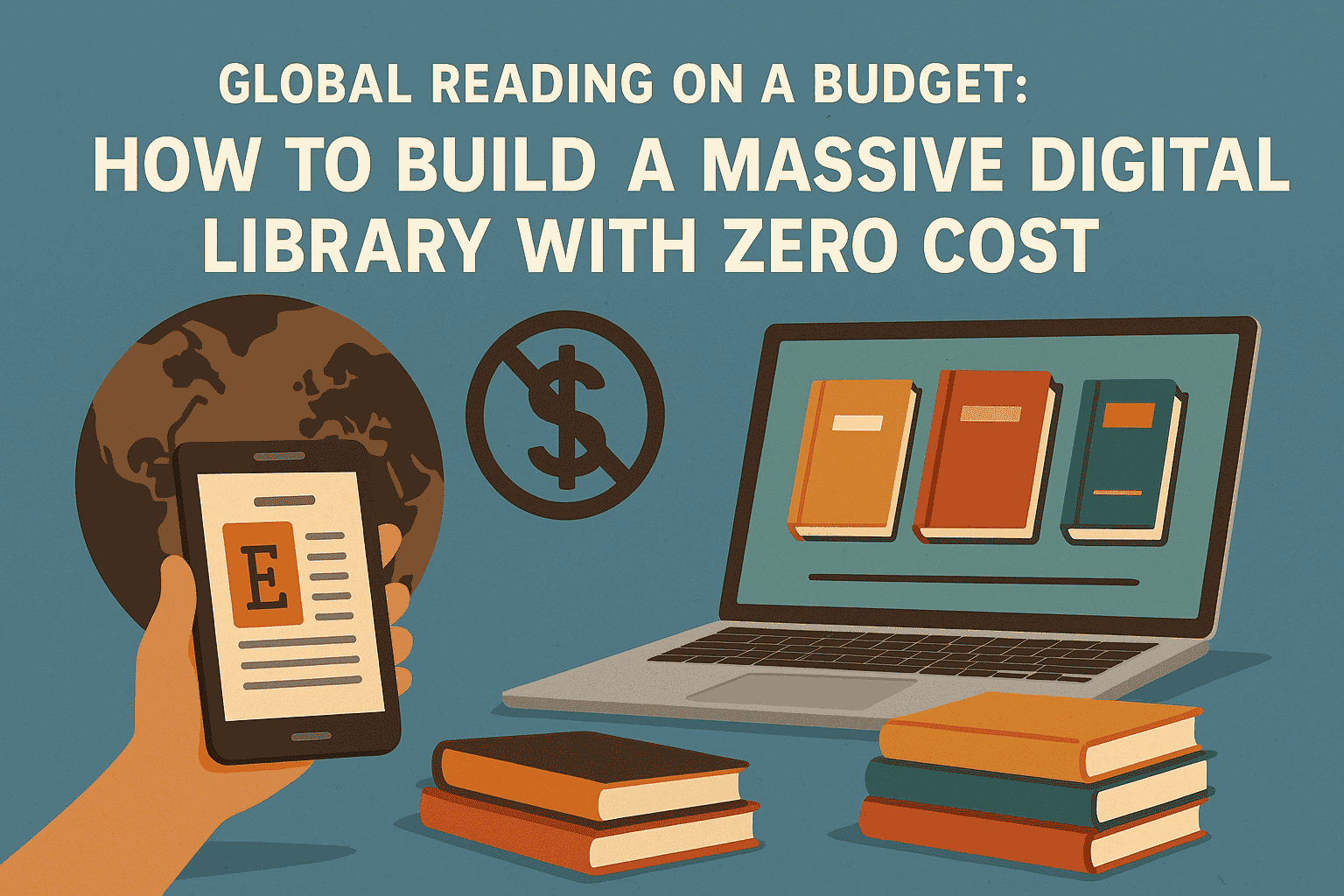How Financial Novels Help Us Understand Market Behavior
Market behavior is often seen as the domain of charts, equations, and cold analysis. But beneath the data and economic indicators lies a complex web of human emotion, ambition, fear, and greed. It is here that financial novels carve out their space—not merely as entertainment, but as powerful tools to understand how markets really work. At Junkybooks, we believe literature often explains finance better than numbers alone ever could.
While textbooks teach us the mechanics of supply and demand or portfolio theory, novels bring us closer to the psychology behind investment decisions, the moral dilemmas within corporate boardrooms, and the ripple effects of financial chaos. In this post, we explore how financial fiction illuminates the often-irrational nature of markets and enhances our understanding of real-world finance.
The Human Side of the Market
Markets do not move solely because of earnings reports or interest rate hikes—they move because people react to those things. Fear, greed, overconfidence, herd mentality—these behavioral patterns drive bubbles, crashes, and everything in between. Financial novels give us a front-row seat to these behaviors in action.
Take Tom Wolfe’s The Bonfire of the Vanities. Though it’s often seen as a satire of 1980s excess, it’s also a lesson in investor psychology. The characters respond to market events with emotional decisions, status-driven thinking, and personal ambition. These reactions mirror real investor behavior—whether it's over-leveraging during bull runs or panicking during downturns.
At Junkybooks, we value stories that expose these truths. Fiction teaches us that markets aren’t just logical—they’re deeply human. And to understand markets, we must understand ourselves.
Fiction as a Lens for Complex Systems
Financial systems are notoriously difficult to grasp. Between derivatives, high-frequency trading, and regulatory frameworks, even seasoned analysts can find it overwhelming. That’s where financial fiction steps in—translating complexity into narrative.
In Michael Lewis’s The Big Short, which was adapted into both a nonfiction book and a narrative-driven movie, the housing market crash is broken down through the eyes of quirky investors and eccentric traders. Though technically nonfiction, its storytelling techniques mimic those of a novel, using character arcs and dramatic tension to explain subprime lending and credit default swaps.
Other novels, like Christopher Reich’s Numbered Account, use suspense and action to dive into topics like Swiss banking secrecy and offshore accounts. Readers come away not just entertained, but also with a clearer picture of how money moves across borders and how laws are bent—or broken—in the pursuit of profit.
At Junkybooks, we see this as a win for financial literacy. A good novel can act as a decoder ring for even the most opaque economic phenomena.
Market Bubbles and Crashes in Storytelling
One of the most intriguing aspects of market behavior is its tendency to form bubbles and crashes—periods of irrational exuberance followed by devastating corrections. Financial novels capture these cycles with visceral detail.
In Frank Partnoy’s F.I.A.S.C.O., which mixes memoir with storytelling, we see the buildup to market catastrophes from the perspective of a Wall Street insider. The book shows how collective optimism, denial, and reckless innovation can inflate asset prices to unsustainable levels.
Similarly, novels like John Lanchester’s Capital portray the economic consequences of speculation and gentrification in a post-financial-crisis London. While the characters may not work in finance, their lives are shaped by market forces beyond their control—demonstrating how financial shocks ripple through everyday life.
At Junkybooks, we believe these fictional portrayals are more instructive than charts. They give readers an emotional understanding of what it's like to live through a crash—not just the numbers, but the fear, confusion, and blame that follow.
Behavioral Finance and Fictional Characters
Behavioral finance studies the psychological influences on investors and markets. Concepts like loss aversion, confirmation bias, and anchoring often play a role in decision-making, even when logic would suggest otherwise. Financial novels provide real-world examples of these biases through characters who make mistakes, learn lessons, or double down on poor decisions.
In Stephen Frey’s The Insider, a young executive is lured into making unethical decisions to gain an edge in the market. His choices aren't driven by models or data, but by ego, pressure, and fear of failure. This reflects the very heart of behavioral finance—where emotions override rational strategies.
Other novels, such as Ayn Rand’s Atlas Shrugged, though philosophical in tone, also reflect how ideology and emotion can influence economic decisions and policy. Characters act based on values, beliefs, and convictions, not always aligned with profit maximization.
At Junkybooks, we love how these stories humanize the theories we read in finance textbooks. They show us what behavioral bias looks like in practice, through people we care about and stories we remember.
A Mirror for Financial Institutions
Financial novels don't just focus on individuals—they also explore institutions, showing how banks, investment firms, and government bodies behave in crises and booms alike. Through fiction, readers gain insight into the internal culture, decision-making processes, and ethical blind spots that define these entities.
In John Kenneth Galbraith’s Money: Whence It Came, Where It Went, though more historical than fictional, the tone and narrative flow mimic a novel, offering scathing critiques of central banks and financial elites. Likewise, Robert Harris’s The Fear Index delves into algorithmic trading and artificial intelligence, showing how modern institutions are shaped by technology and risk.
These novels often reveal the institutional inertia and groupthink that contribute to financial disasters. They make abstract critiques more tangible and highlight how systems built by humans can fail due to very human flaws.
At Junkybooks, we think these fictional worlds give readers a behind-the-scenes look into institutions that often seem opaque or inaccessible in real life.
Inspiring Financial Curiosity
One of the more underrated benefits of financial novels is how they spark curiosity. Readers who might not pick up a book on market theory might eagerly consume a thriller set on Wall Street or a drama unfolding in a hedge fund office. Once hooked, they often seek out more knowledge—bridging fiction with fact.
We’ve heard from countless readers at Junkybooks who said their interest in finance started with a novel. Whether it was the high-stakes deals in Jeffrey Archer’s The Fourth Estate or the trading-floor chaos in Michael Ridpath’s Trading Reality, fiction made the financial world feel alive and worth exploring.
And that’s the beauty of financial fiction—it makes markets accessible, relatable, and engaging. It breaks down barriers and invites readers into conversations they may have previously avoided.
Real Lessons from Imaginary Markets
Though fictional, the best financial novels are grounded in real-world insight. They may feature imagined characters and events, but the underlying themes—risk, uncertainty, trust, and consequence—are all very real.
In this way, these novels do more than entertain. They educate, warn, and prepare. They give us the tools to recognize the signs of irrational markets, to question the motives behind financial decisions, and to empathize with those affected by economic upheaval.
At Junkybooks, we believe that reading financial fiction isn’t just a pastime—it’s a form of financial education.
Conclusion: Storytelling as a Financial Compass
Markets are stories—stories we tell ourselves about value, about the future, about what’s worth risking. Financial novels tap into these narratives and make them visible. They show us that markets aren't made up of numbers—they're made up of people, and people are complex, emotional, and imperfect.
Through fiction, we explore not only what markets do, but why they behave the way they do. We witness the pressures behind insider trading, the irrational exuberance of bubbles, and the emotional weight of a crash. We learn through the eyes of characters who succeed, fail, or simply try to navigate a world where the rules are always changing.
So if you want to truly understand market behavior, don’t just look to spreadsheets or stock tickers. Pick up a novel. Because sometimes, the best way to learn about money… is through a story.








